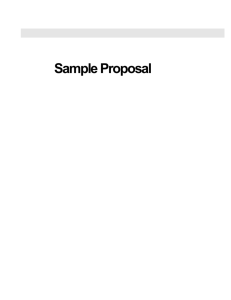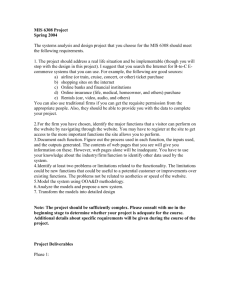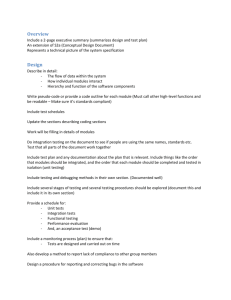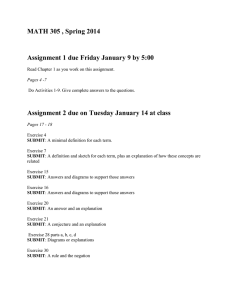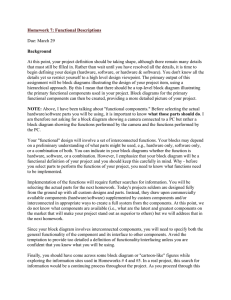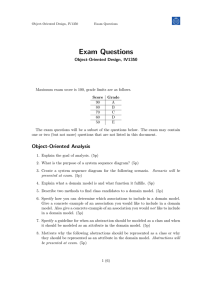Philadelphia University Faculty of Administrative & Financial Sciences
advertisement
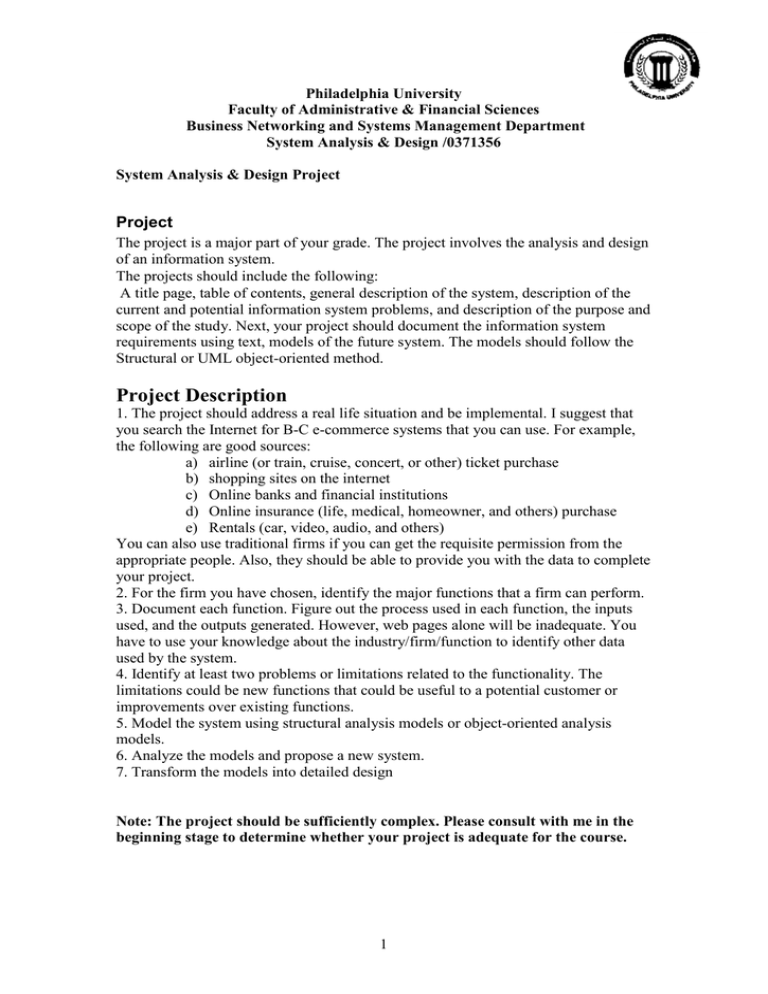
Philadelphia University Faculty of Administrative & Financial Sciences Business Networking and Systems Management Department System Analysis & Design /0371356 System Analysis & Design Project Project The project is a major part of your grade. The project involves the analysis and design of an information system. The projects should include the following: A title page, table of contents, general description of the system, description of the current and potential information system problems, and description of the purpose and scope of the study. Next, your project should document the information system requirements using text, models of the future system. The models should follow the Structural or UML object-oriented method. Project Description 1. The project should address a real life situation and be implemental. I suggest that you search the Internet for B-C e-commerce systems that you can use. For example, the following are good sources: a) airline (or train, cruise, concert, or other) ticket purchase b) shopping sites on the internet c) Online banks and financial institutions d) Online insurance (life, medical, homeowner, and others) purchase e) Rentals (car, video, audio, and others) You can also use traditional firms if you can get the requisite permission from the appropriate people. Also, they should be able to provide you with the data to complete your project. 2. For the firm you have chosen, identify the major functions that a firm can perform. 3. Document each function. Figure out the process used in each function, the inputs used, and the outputs generated. However, web pages alone will be inadequate. You have to use your knowledge about the industry/firm/function to identify other data used by the system. 4. Identify at least two problems or limitations related to the functionality. The limitations could be new functions that could be useful to a potential customer or improvements over existing functions. 5. Model the system using structural analysis models or object-oriented analysis models. 6. Analyze the models and propose a new system. 7. Transform the models into detailed design Note: The project should be sufficiently complex. Please consult with me in the beginning stage to determine whether your project is adequate for the course. 1 Project Deliverables Phase 1: Interact with the website to understand the functionality provided by the site. Identify any problems you encounter in using the site. Note down any improvements that can be made. The problems and improvements should relate to the functionality provided by the system. Your documentation must include. -Source documents, including screen dumps, from the website. -A brief description of functionality provided by the system. -A problem statement (Systems Proposal) (Include only the problems or limitations you encountered; there is a need for objectives and scope) Phase 2: Identify new processes, data, and data flows for the new system. Your new model should be able to eliminate (at least partially) the problems that you had identified in the current system. Prepare the new logical model that includes If you use a structural method prepare the following for the proposed Web-site: 1. Data Flow Diagrams the Web site. 2. Data dictionary 3. Process description If you use object-oriented analysis method prepare the following for the proposed Web-site: 1. 2. 3. 4. 5. 6. Process Model: Use-Case Diagrams for critical business processes Data Model: A class diagram Object Behavior Model: A Sequence Diagram for the major Use Case. state transition diagrams activity diagrams Documentation of all data used in the above models 2 Phase 3: Transform the logical model into a detailed design. The design should include A. Database design: 1. create an initial ERD 2. assign all data elements to entities 3. create 3NF designs for all tables, taking care to identify all primary, secondary, and foreign keys 4. generate the final ERD that will include new entities identified during normalization There is no need to implement the database. B. Interface & Screens Design C. Input, Output & report Design. D. Control Design. 3

